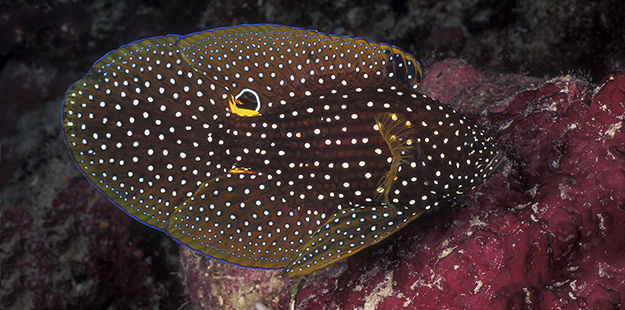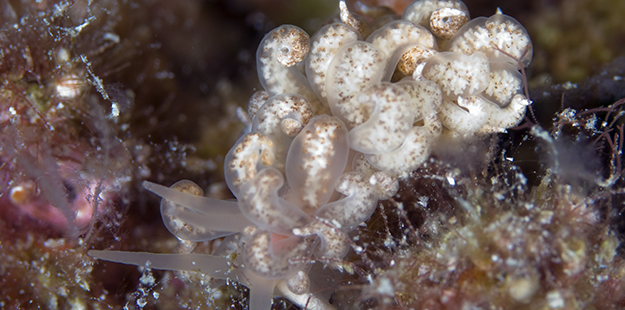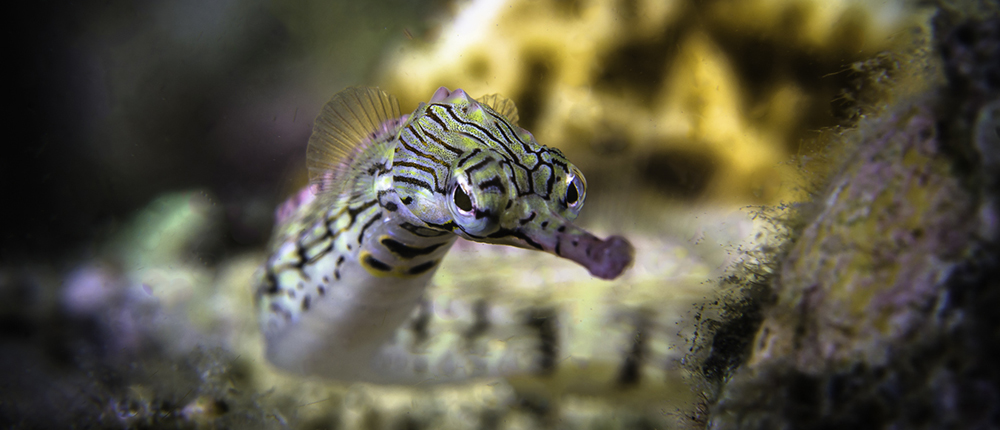Wakatobi’s Macro Magic

The hairy squat lobster’s near-translucent body glows with pearl-like luminance. Photo by Jamie Ann Robinson
Fairies at The Zoo
As you might expect from it’s name, the dive site known as The Zoo delivers a diverse menagerie of marine life, including some small treasures. One macro-sized resident that is relatively easy to locate is the pink hairy squat lobster, which also goes by the name of fairy crab. Purists might point out that neither name is completely accurate, as this diminutive creature is neither a lobster or a true crab, and is instead a member of the Anomuran group of decapod crustaceans. Scientific nitpicking aside, the hairy squat lobster is a favorite subject for macro photographers. It’s near-translucent body glows with pearl-like luminance and intense pinkish-purple accents, while a coat of delicate white hairs evokes a fairy-like appearance. Finding one or more hairy squat lobsters is usually just a matter of the undersides of one of the giant barrel sponges that thrive at The Zoo. Just be sure to move in slowly, as these creatures can be shy if they feel threatened.

With its dusting of fiine white spots, the comet fish, Calloplesiops altivelis, bears a certain likeness to its celestial namesake. Photo by Mark Strickland
Magnificent comets
The site known as Magnifica is known for it’s resident population of comet fish. But if you don’t know what you are looking for, you might think the numerous crevices of the reef are home to a colony of small eels. A closer look will reveal that what at first looked like the head of an eel was actually the tapering rear end of a nocturnal comet fish tucked head-first into the reef — an illusion made more convincing by a pair of distinctive eyespots located on the fish’s rear flanks. And there’s another illusion you will notice if you happen to see a comet fish out and about during a night dive. The actual eye is cleverly camouflaged amid the galaxy of white spots that cover the fish’s body. This bit of trickery might cause a would-be predator to lunge for what it assumed was the comet fish’s head, causing it to miss when it’s intended prey make a flick of its tail to move in the opposite direction of what the attacker anticipated.

Closer examination of the solar-powered nudibranch will reveal typically more than eight tentacles, and brown spots that are not suckers but actually colonies of zooxanthellae algae. Photo by Rob Darmanin
The sunshine connection
There is a certain nudibranch you may run across at Wakatobi that were into harvesting sunlight long before eco-conscious humans started putting solar panels on their roofs. A good place to start your search for Phyllodesmium longicirrum — aka the solar-powered nudibranch — is among the hard corals at Teluk Maya. At first glance, this relatively large species might be mistaken for some sort of mutated octopus, because rather than the typical slug-like body usually associated with nudibranchs, it sprouts tentacles. Closer examination will reveal there are usually more than eight, and that the brown spots on these off-white tentacles are not disk-like suckers. Instead, these blotches are actually colonies of zooxanthellae algae living. The solar nudibranch harvests this algae from octocorals, incorporating the crop into its own body, and draws sustenance from the algae’s photosynthesis process.
Ready to discover the small treasures of Wakatobi? Start planning your visit to experience Wakatobi’s aquatic wonders and topside indulgences. Contact us at office@wakatobi.com or complete a quick trip inquiry at wakatobi.com.
Enjoy marine life videos on our YouTube page.
Visit us on Facebook.


